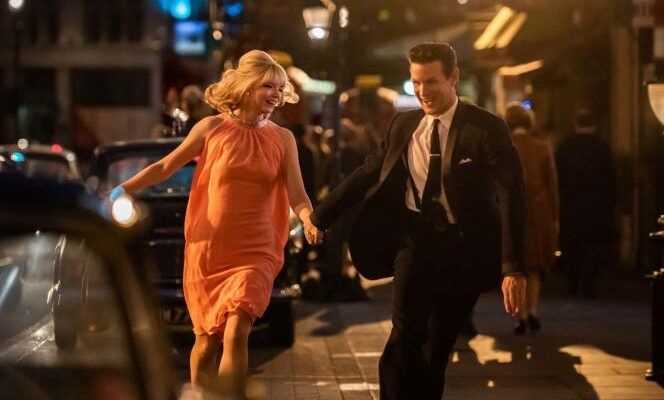THE OPINION OF THE “WORLD” – WHY NOT
A beautiful idea presides over Last Night in Soho, Edgar Wright’s new film (Baby Driver, 2017), presented in September in Venice: the story of a heroine born in the wrong time. The film opens with the world of Eloise (Thomasin McKenzie), a young provincial who daydreams in her room, feverishly awaits the mail from a prestigious fashion school that she dreams of joining. Music, sets, costumes, objects: everything indicates that we are in the heart of the 1960s, before the young girl, admitted to school, leaves her temporal cocoon to join the streets of London in the present day. This collision between two eras, one dreamed of and the other very real, offers the film its best visual discoveries, depicting the loss of an anachronistic heroine in the midst of contemporary vulgarity.
Nothing says more about its phase shift, this way of contaminating dreams in reality, than this pretty student party scene where techno music mingles with the Kinks hit that Eloise listens to on headphones, deaf to rituals and culture. of his generation. As long as he holds two aesthetics opposite each other, Edgar Wright manages to film a beautiful idea that slowly dissipates when the film loses sight of reality to begin its true ambition.
Formal coup de force
Manhandled by her roommates, Eloise leaves the roommate to rent a room in an old lady’s house: a place that marinates in its sixties juice, untouched ever since. Space becomes time, and every evening, without the film justifying it, the young student rocks in the middle of Swinging London, in the shoes of Sandie (Anya Taylor-Joy), singer in a nightclub. When Sandie walks past a mirror, it’s Eloise reflected in it – and sometimes the other way around.
Through Sandie’s Nights, Eloise discovers behind the scenes of the time she idealized: under the postcard a sexist nightmare is woven, full of stupor and predators thirsty for fresh flesh. The film switches to the psychological thriller saturated with sound and visual effects that summon Dario Argento’s “giallio”, Repulsion of Polanski, the Gothic vein of Hitchcock. So many quotes that turn out to be the true subject of Edgar Wright who sacrifices story and characters in the name of formal coups de force. But if he summons so many noble references, Last Night in Soho is only a very cultural tribute, calm and disembodied. His baroque film ambitions vainly attempt to conceal the poverty and opportunism of the “post- # metoo” scenario. For Sandie and Eloise, the trap is not so much a patriarchal nightmare portrayed in broad strokes as this tunnel of pop scenes that look like an endless music video.
You have 3.35% of this article left to read. The rest is for subscribers only.
